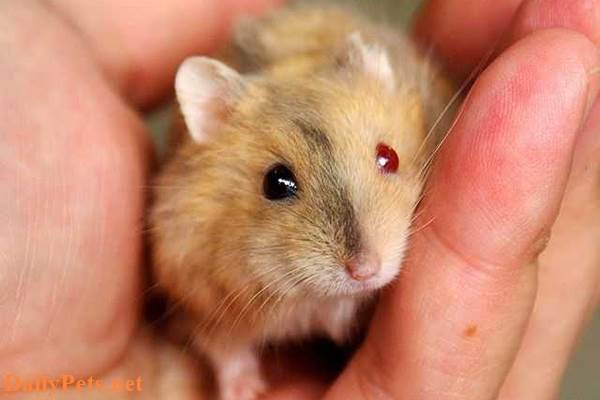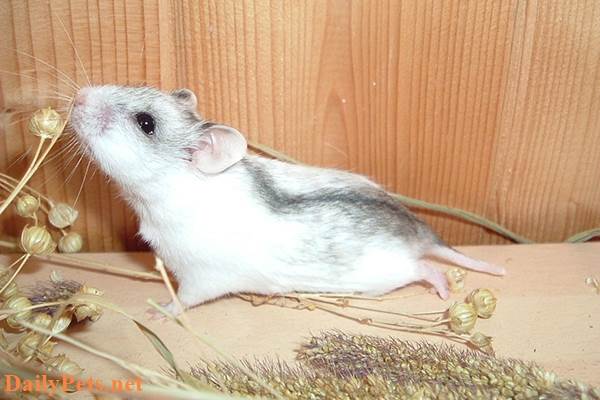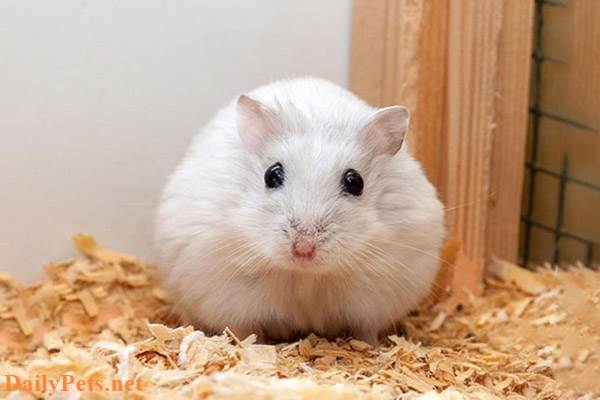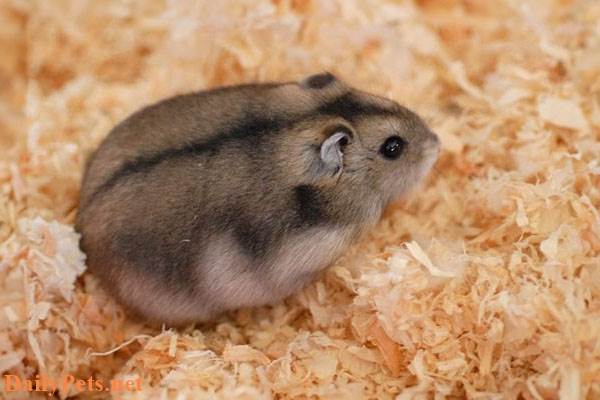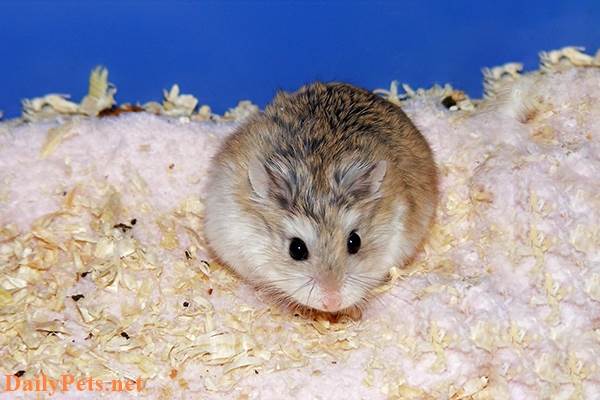Today, DailyPets.net will share about the origin, characteristics, and how to care for Teddy Bear Hamsters through this article.
What is a Teddy Bear Hamster?
While literature often features adorable or unpleasant mice, hamsters emerge as one of the most favored choices for children’s pets. The Teddy Bear Hamster stands at the forefront of the desired pet list.
Referred to as Syrians, goldens, or fancy bears, Teddy Bear Hamsters exhibit immense cuteness and a cuddly demeanor, likely contributing to their widespread popularity as a pet breed.
Originating from Syria, these hamsters were initially domesticated in the 1930s and swiftly acclimated to domestic life thanks to their exceptionally gentle disposition.
Physical characteristics of Teddy Bear Hamsters
Teddy Bear Hamsters have the potential to reach a size of approximately 4-7 inches in length, making them one of the larger hamster breeds-almost twice the size of Teddy Bear Hamsters have the potential to reach a size of approximately 4-7 inches in length, making them one of the larger hamster breeds-almost twice the size of dwarf hamsters (Robo hamsters).
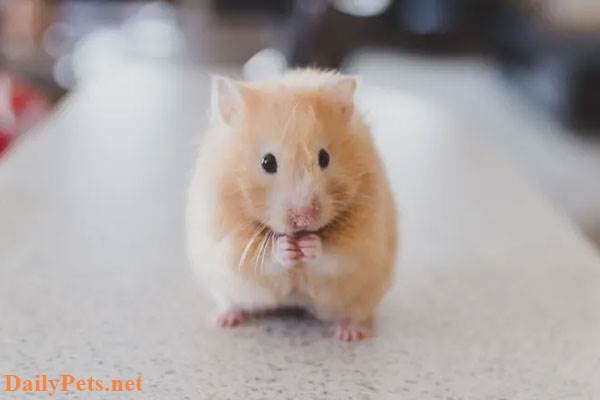
Teddy Bear Hamster.
These hamsters exhibit a wide array of colors, patterns, and coat variations. Their physique is characterized by a robust, barrel-shaped body complemented by a short, stubby tail nearly concealed beneath their abundant fur.
Their ears resemble delicate tulip petals and are paper-thin, while their dark, round, glossy eyes are symmetrically positioned on either side of their face. Notably, their small pink noses are constantly twitching, and their compact, stout legs contribute to their agility and speed when required.
Teddy Bear Hamster lifespan
The size of a hamster often correlates with its lifespan. Syrian hamsters, being larger, typically live for around two to three years as teddy bears. They can sometimes reach up to five years with good care and health, although this is rare. According to the Guinness Book of World Records, the oldest recorded hamster lived to be 7 years old.
Syrian hamster populations are declining in the wild due to habitat loss and climate change effects. Preserving the lives of pet hamsters is crucial in light of these challenges.
Caring for a Teddy Bear Hamster
Given their minimal care requirements, interactive playfulness, and ease of training, Teddy Bear Hamsters are an excellent choice for families with young children.
Unlike dogs and cats, which demand continuous attention, hamsters primarily rest during the day and tend to be more active at night. While often referred to as nocturnal, most Teddy Bear Hamsters exhibit crepuscular behavior, meaning they are most active during dawn and dusk—aligning well with the typical school schedule.
Initial efforts and care are crucial when bringing a Teddy Bear Hamster home, as they need taming and training to prevent biting. Once accustomed to handling, as long as they have opportunities for regular exercise beyond their enclosure, they can lead content and healthy lives.
In the long term, hamsters have minimal needs, relying on us for basics like food, water, and shelter. Routine cage cleaning and provision of chew toys and mental-physical stimulation are essential.
Creating a balanced diet
Domestic Teddy Bear Hamsters possess omnivorous tendencies, enjoying a varied diet of plants, insects, and vegetables.
Pre-packaged muesli or pellets from pet stores provide essential nutrients, but small amounts of fresh fruits, vegetables, and herbs are excellent dietary supplements.
Ideally, provide foods resembling their natural diet in the wild. Be cautious with fresh fruits due to their sugar content. The same applies to commercial hamster snacks, which might be high in sugar despite dental benefits.
Hydration needs
Although hamsters don’t consume large water volumes (unless there’s an underlying health issue), your Teddy Bear Hamster should have access to 2-4 teaspoons of water daily to stay hydrated. Their relatively low water consumption doesn’t indicate disinterest; water shouldn’t be substituted.
A Teddy Bear Hamster deprived of regular water access might not survive beyond a week. Never leave them unattended for extended periods; consistently provide clean, fresh water in their bottle.
Are Teddy Bear Hamsters Friendly? Teddy Bear Hamsters exhibit delightful personalities and temperaments. They tend to enjoy human interaction and being held when acclimated to handling from a young age.
Fancy bear hamsters are characterized by their friendliness, curiosity, and courage. They take pleasure in exploring their environment, burrowing, and roaming. However, a hamster’s friendliness can also be influenced by factors like gender, tameness, and whether they are kept alone.
Syrian hamsters, in particular, form strong bonds with their owners due to their solitary nature and reliance on humans for companionship. Nonetheless, it’s important to note that while they generally tolerate careful handling, they might become skittish when startled or frightened.
Common questions about Teddy Bear Hamsters
Do Teddy Bear Hamsters Bite?
Like any creature, Teddy Bear Hamsters can be unpredictable, necessitating cautious handling. Even the most docile hamster can bite if they feel anxious, stressed, or uncomfortable while being held.
Given their limited eyesight, hamsters rely on other senses to navigate their surroundings and ensure their safety. Thus, it’s crucial to approach them slowly to prevent startling them. Hand hygiene is also vital to avoid confusing your fingers with food.
Just like humans, hamsters dislike disturbances during sleep. Avoid prodding them awake, as it might trigger a defensive bite.
If your hamster does bite, it doesn’t inherently indicate aggression. You can train them not to bite by employing strategies like hand washing, wearing gloves, and offering treats for positive behavior.
What is the difference between a Syrian Hamster and a Teddy Bear Hamster?
A Syrian hamster with long hair is often referred to as a Teddy Bear Hamster due to its adorable and fluffy appearance. In contrast, a short-haired Syrian hamster is known as a fancy hamster, and these terms are interchangeable.
Although both are the same species, breeders have given them distinct names based on their coat color and patterns. For instance, black bear hamsters are essentially Syrian hamsters with black fur.
While it might seem like Teddy Bear Hamsters are a separate breed, they are, in fact, Syrian hamsters with specific coat characteristics.
How to tame a Teddy Bear Hamster?
Taming Teddy Bear Hamsters follows the same principles as other hamsters. These hamsters, being larger than dwarfs, are generally easier to handle, especially if acquired at a young age.
Regular, gentle handling helps tame most hamsters, building trust over time. Here’s a general approach, but remember that individual hamsters vary:
- Allow them to acclimate for a few days after bringing them home.
- Begin interaction by offering treats through cage bars.
- Gradually place your hands inside for treats, progressing to offering treats from your palms.
- Encourage them into a container for secure handling.
- Hold them in a secure play area, moving hands in a forward motion.
- Learn to pick them up using a gentle cupping motion.
- Be patient, as each hamster’s taming duration varies.
How to detect pregnancy in a Teddy Bear Hamster?
Female Teddy Bear Hamsters emit a distinctive scent during their estrus cycle, attracting males for mating. They can become pregnant as early as 6-8 weeks old.
Pregnancy symptoms include changes in secretions, thicker and persistent discharge, belly swelling from the 10-day mark, altered temperament, nesting behavior, and reduced tolerance for handling.
How long is the gestation period in hamsters?
Teddy Bear Hamsters have a brief pregnancy of around 16 days, shorter than other hamster breeds like Roborovski hamsters (22-30 days). Providing extra care, protein-rich food, ample bedding, and eliminating strenuous toys is essential during pregnancy.
How Many Babies Can Teddy Bear Hamsters Have?
A typical litter of Teddy Bear Hamsters usually consists of 6 to 8 pups. These pups are born without fur, with closed eyes and ears, but they do have their front incisor teeth.
While your hamster will manage the birthing process, it’s important to be patient as there can be 10 to 30-minute intervals between each pup’s arrival.
After the hamster pups are born, their mother will care for them. However, during the initial days, she’ll require tranquility and might display increased aggression if her space is disturbed. Cover the cage with a blanket to minimize stress, reduce interactions for at least two weeks, and avoid disturbing the nest. When providing food and water, do so quietly.
Hamster pups rely on their mother’s care until they are weaned at 3 weeks old. At around 10 days, you can introduce softened food moistened with water.
How to determine the sex of a Teddy Bear Hamster?
Distinguishing the sex of a Teddy Bear Hamster can be challenging, particularly with young or untamed hamsters. However, there are discernible differences in genitalia that can help identify their sex.
Male hamsters usually have prominent testicles, which you can observe when they’re on their backs or grooming their genital area. Female hamsters have 6 pairs of nipples, although these might be challenging to see due to their long fur.
If your hamster is tamed, examining the genitalia and anogenital distance can provide clues. Female hamsters have a very short gap between their sexual organ and anus, often with a bald area. In males, the gap is larger, and hair is present.
Other differences include:
- Male hamsters are generally larger in appearance than females.
- Females have a more rounded rear compared to the elongated rear of males.
- Male hamsters possess more prominent scent glands on their flanks or belly.
For certainty, consulting a veterinarian can help determine the hamster’s sex.
How much does a Teddy Bear Hamster cost?
Acquiring a Teddy Bear Hamster doesn’t have to break the bank; adoption is cost-effective. If you purchase from a breeder or pet store, the price typically ranges to $20.
However, while the initial cost of a hamster might be affordable, it’s important to consider additional expenses for necessary supplies, food, and bedding. Here’s a breakdown of potential costs to help you budget:
- Cage: Teddy Bear Hamsters can reach 5-7 inches, necessitating a spacious cage. Costs range from $20 to $100. DIY enthusiasts might find instructions for creating a hamster bin cage.
- Bedding: Hamsters are natural burrowers, so sufficient bedding is essential. A layer of about 6 inches using paper-based bedding costs between $12 and $40.
- Food Dish: A simple food dish, costing around $5, is important for feeding.
- Water Bottle: A daily-filled plastic or glass water bottle costs about $6-$12.
- Hideout: Hamsters require a secure retreat; hideouts range from $5 to $12 based on material.
- Chew Toys: Toys for dental health generally cost around $2.
- Toys: Teddy Bear Hamsters are active and need stimulation. Tunnels, tubes, and bridges costing $5-$10 (material dependent) offer activity.
- Wheel: A hamster wheel (8-12 inches) for energy release ranges up to $40.
- Food: Nutritious pre-made pellet and seed mix from a pet store costs around $18.
- Carrier: A carrier isn’t an immediate necessity but is useful for vet trips. Basic carriers are about $10-$12, or DIY versions can be made with existing boxes.
It’s wise to keep some funds aside for potential veterinary expenses, as unexpected illnesses can arise.
Remember, the investment goes beyond initial costs. Proper care, attention, and medical needs will improve your hamster’s happiness.
